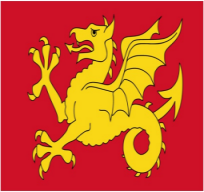G8JNJ
About
- Username
- G8JNJ
- Joined
- Visits
- 4,662
- Last Active
- Roles
- Member
- Points
- 130
Reactions
-
QRM: Radio China International - From Albania - OV +++
No, you need to either notch out the strong signal which has a minimal reduction in overall performance across the whole frequency range, or put an attenuator in line which will reduce the performance on the higher frequency bands where the natural noise floor is lower and you need the additional gain.
If you read the many posts on this forum regarding 0V indication, the notch is the best solution for this particular problem.
I have notches for all the SW broadcast bands ahead of all my KiWi's.
Regards,
Martin - G8JNJ -
QRM: Radio China International - From Albania - OV +++
Hi Giulio,
Adding a series tuned notch filter across the KiWi RF input will help reduce the problems on 7345KHz.
These values give the bets compromise between notch depth and attenuation on the adjacent 40m amateur band.
For this simulation I have used an inductor with a Q of 50. But if you can use a better inductor, it will provide a deeper and narrower notch.
31 turns wound on a T50-2 iron powder core would be a good starting point, but you would have to add or remove turns in order to tune the notch to the exact frequency.
It will attenuate signals on 40m to a certain extent, so the signal levels will drop slightly, however as the natural noise floor is usually the limiting factor on the lower frequency bands, I don't think it will harm the Signal to Noise ratio.
As a test you could run the WSPR decoder with and without the notch in circuit, and compare the average S/N before and after, but always compare reports of the same transmitting stations, don't compare different stations with each other.
The other interference is something local to you, but sort out the 7MHz overload before investigating the other problems.
Regards,
Martin - G8JNJ -
Monitor Battery Voltage At Remote Site
I've often wondered if it would be useful for the KiWi to be able to present a simple webpage in place of the existing top bar which has limited formating options.
Perhaps this could also allow content from other sources to be embedded in the page.
This may allow folks to provide more detail about the KiWi config and include other dynamic data such as telemetery, weather or perhaps even a webcam / video feed to be inserted.
Regards,
Martin - G8JNJ -
Re-designing the OV marker space?
Hi John,
I wonder if it would be worthwhile bringing the OV indication out to one of the P9 GPIO pins ?
It could then be used to drive an external attenuator circuit via a suitable averaging circuit, so that a crude form of AGC could be applied. This could possibly help folks in locations who suffer from excessive day / night variations in signal levels.
Regards,
Martin - G8JNJ -
Re-designing the OV marker space?
Hi John,
I wonder if it would be worthwhile bringing the OV indication out to one of the P9 GPIO pins ?
It could then be used to drive an external attenuator circuit via a suitable averaging circuit, so that a crude form of AGC could be applied. This could possibly help folks in locations who suffer from excessive day / night variations in signal levels.
Regards,
Martin - G8JNJ





